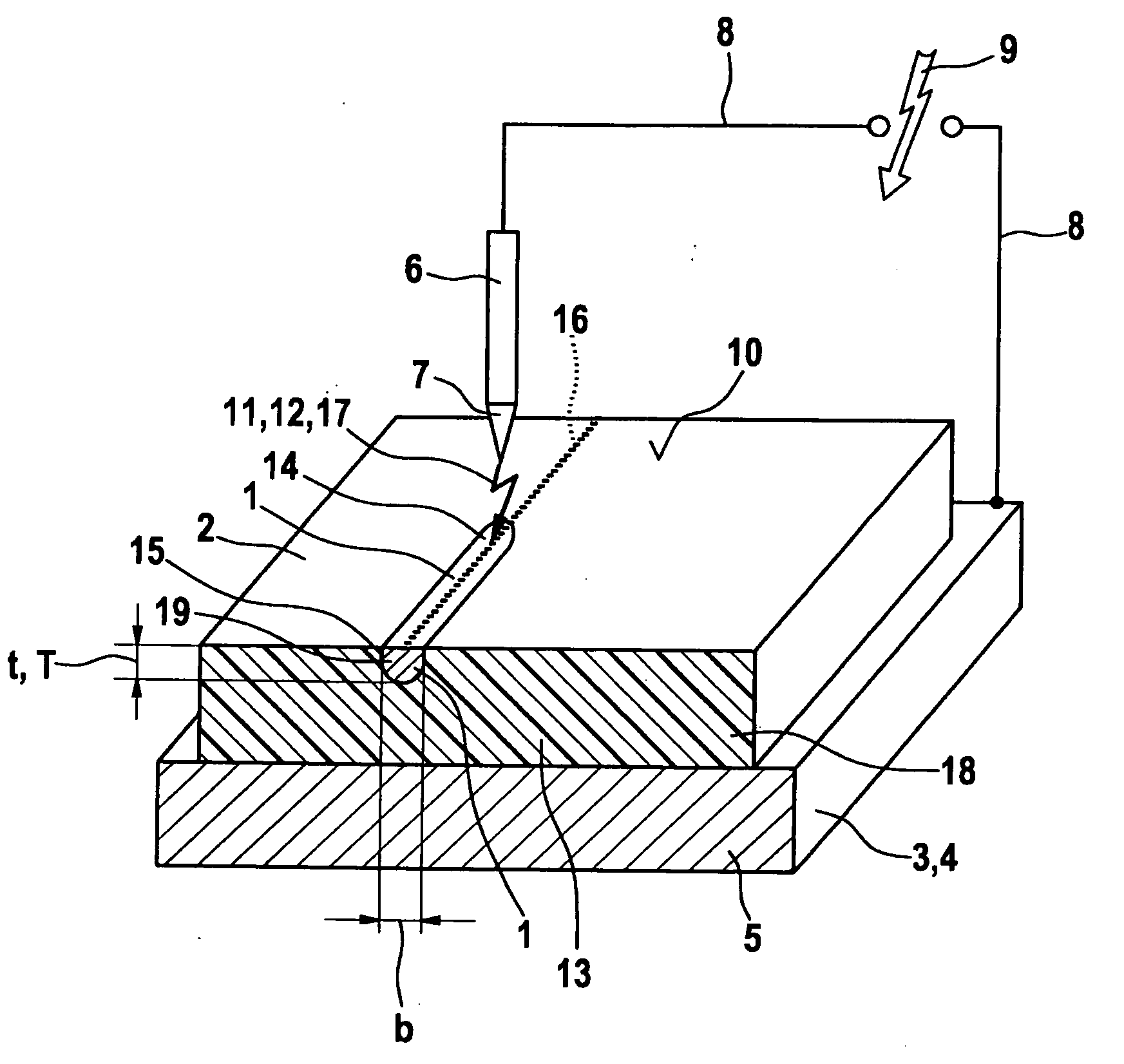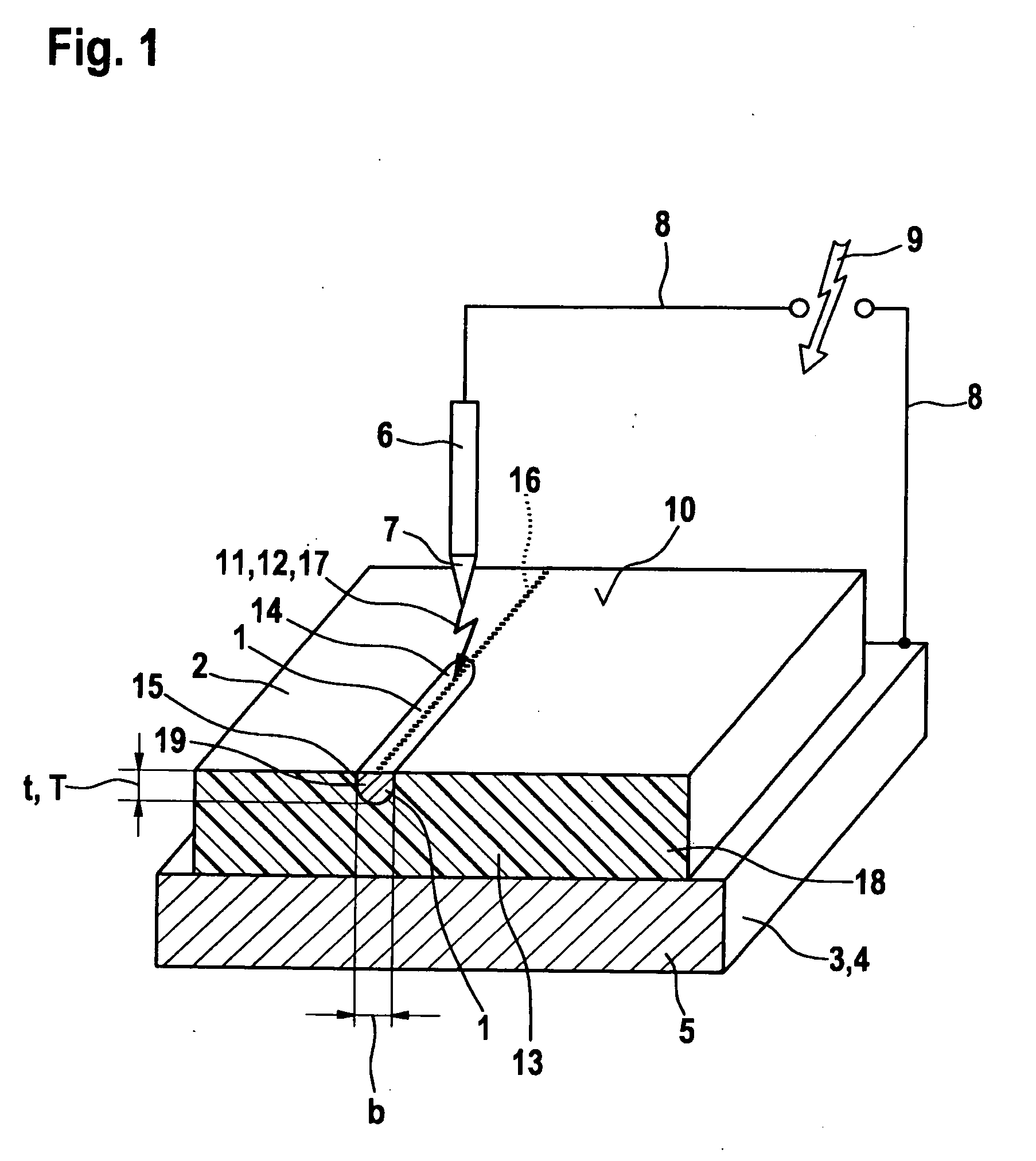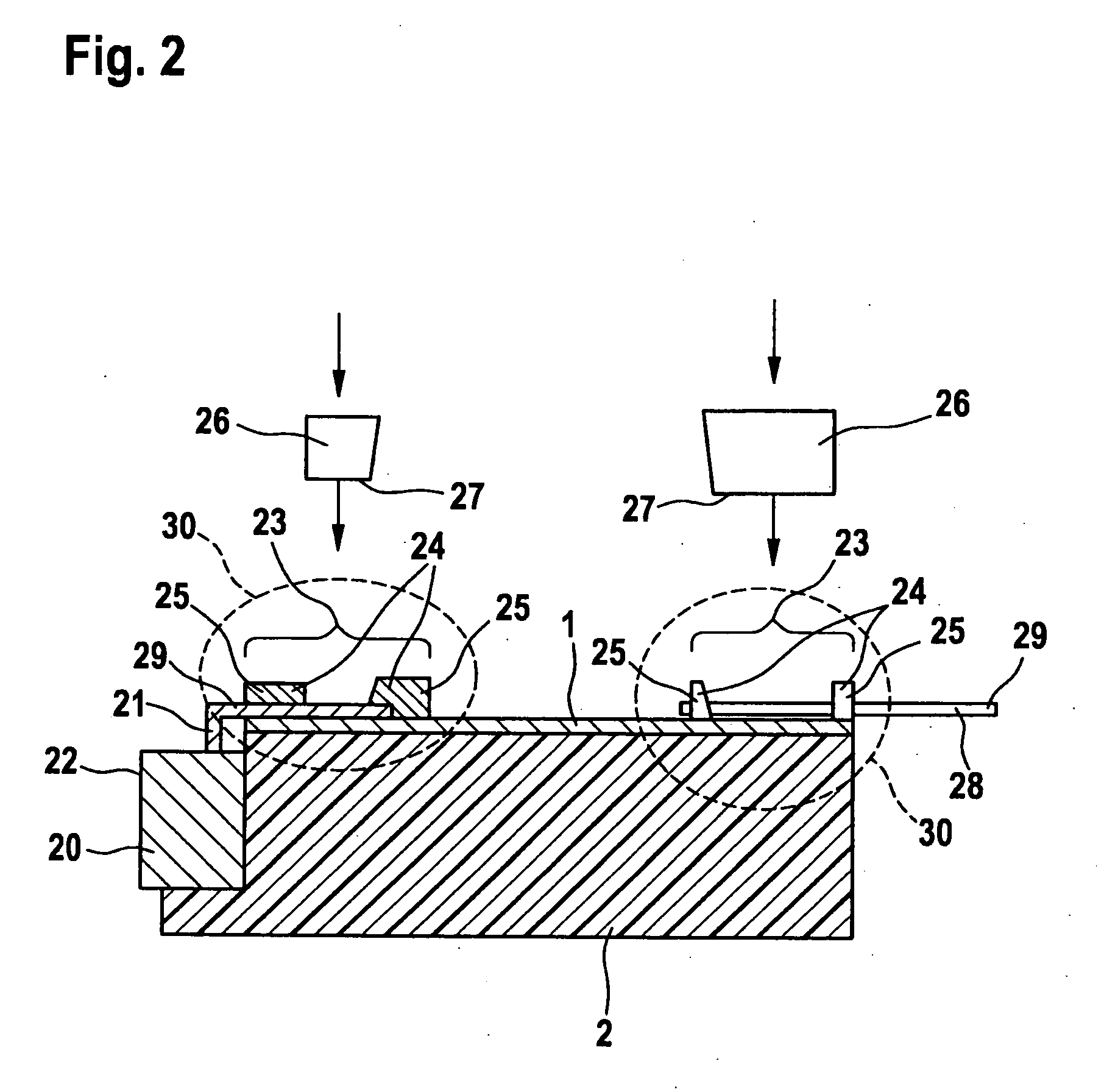Method for producing an electrically conductive path on a plastic component
- Summary
- Abstract
- Description
- Claims
- Application Information
AI Technical Summary
Benefits of technology
Problems solved by technology
Method used
Image
Examples
Embodiment Construction
[0016]FIG. 1 shows a schematic representation of the method for producing an electrically conductive path 1 on a plastic component 2. To do this, plastic component 2 is placed on an electrically conductive carrier 3, foe instance, a metal plate 4. In this instance, carrier 3 forms an electrical antipole 5 to an electrical conductor 6, that is situated displaceably above plastic component 2, and that is preferably developed in the form of a spark tip 7 or has a spark tip 7. Between antipole 5 and spark tip 7, an electric field is generated, particularly via a high voltage generator 9 that is connected using electrical connections 8. Since plastic component 2 is conductively lying upon antipole 5, the electric field forms between spark tip 7 and a top side 10 of plastic component 2. If the field strength is sufficiently high, the striking of a spark 11 occurs between spark tip 7 and plastic component 2, in such a way that an electrical spark 12 is applied to top side 10 of plastic com...
PUM
| Property | Measurement | Unit |
|---|---|---|
| Electrical conductivity | aaaaa | aaaaa |
| Depth | aaaaa | aaaaa |
| Energy | aaaaa | aaaaa |
Abstract
Description
Claims
Application Information
 Login to View More
Login to View More - R&D
- Intellectual Property
- Life Sciences
- Materials
- Tech Scout
- Unparalleled Data Quality
- Higher Quality Content
- 60% Fewer Hallucinations
Browse by: Latest US Patents, China's latest patents, Technical Efficacy Thesaurus, Application Domain, Technology Topic, Popular Technical Reports.
© 2025 PatSnap. All rights reserved.Legal|Privacy policy|Modern Slavery Act Transparency Statement|Sitemap|About US| Contact US: help@patsnap.com



